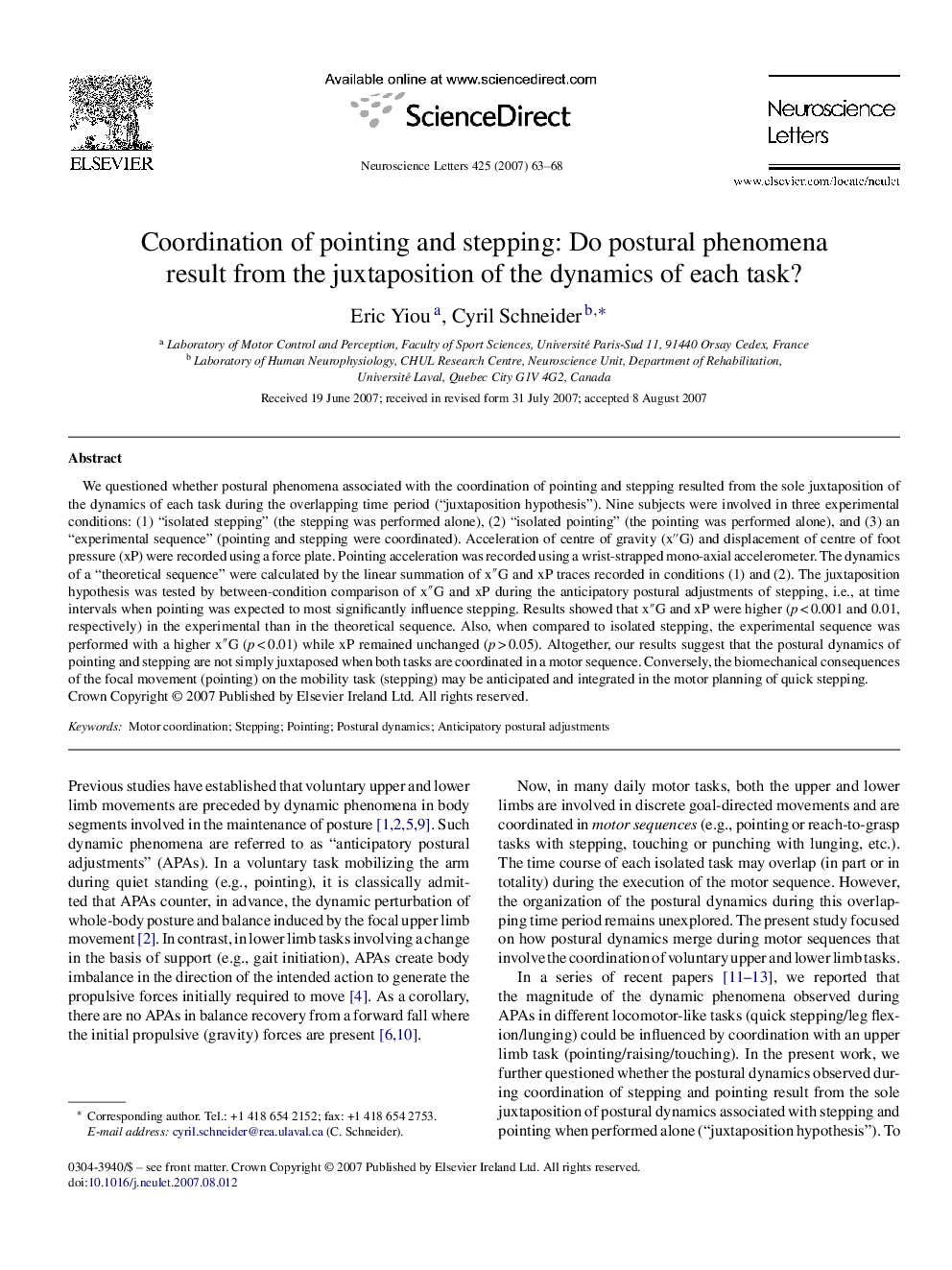| Article ID | Journal | Published Year | Pages | File Type |
|---|---|---|---|---|
| 4349202 | Neuroscience Letters | 2007 | 6 Pages |
We questioned whether postural phenomena associated with the coordination of pointing and stepping resulted from the sole juxtaposition of the dynamics of each task during the overlapping time period (“juxtaposition hypothesis”). Nine subjects were involved in three experimental conditions: (1) “isolated stepping” (the stepping was performed alone), (2) “isolated pointing” (the pointing was performed alone), and (3) an “experimental sequence” (pointing and stepping were coordinated). Acceleration of centre of gravity (x″G) and displacement of centre of foot pressure (xP) were recorded using a force plate. Pointing acceleration was recorded using a wrist-strapped mono-axial accelerometer. The dynamics of a “theoretical sequence” were calculated by the linear summation of x″G and xP traces recorded in conditions (1) and (2). The juxtaposition hypothesis was tested by between-condition comparison of x″G and xP during the anticipatory postural adjustments of stepping, i.e., at time intervals when pointing was expected to most significantly influence stepping. Results showed that x″G and xP were higher (p < 0.001 and 0.01, respectively) in the experimental than in the theoretical sequence. Also, when compared to isolated stepping, the experimental sequence was performed with a higher x″G (p < 0.01) while xP remained unchanged (p > 0.05). Altogether, our results suggest that the postural dynamics of pointing and stepping are not simply juxtaposed when both tasks are coordinated in a motor sequence. Conversely, the biomechanical consequences of the focal movement (pointing) on the mobility task (stepping) may be anticipated and integrated in the motor planning of quick stepping.
